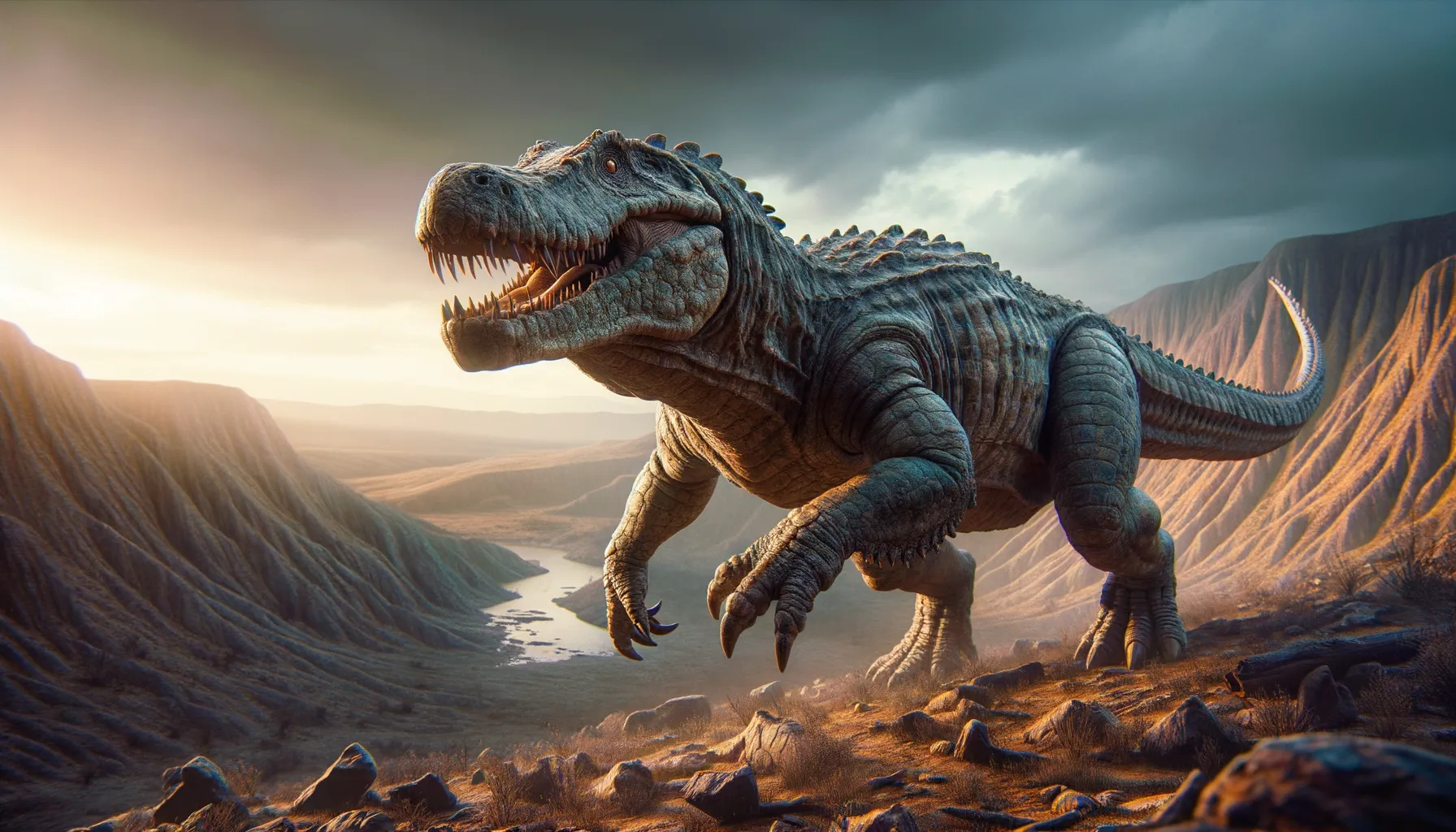
Postosuchus
The predator before the age of dinosaurs.
Period
Triassic
Length
About 5 to 6 meters from head to tail.
Height
Around 1.2 meters at the shoulders.
Weight
Approximately 300 to 600 kilograms.
Postosuchus was a fearsome prehistoric reptile that roamed the Earth during the late Triassic period. It resembled a crocodile, with a powerful build and sharp teeth, making it an adept predator of its time. Despite being called a dinosaur by many, it actually belongs to a family of reptiles predating true dinosaurs. Their fossils give insights into the diversity and evolution of early archosaurs. These creatures were typically solitary and roamed the dry lands they inhabited.
Diet
It was a carnivore, likely preying on smaller reptiles and early mammals. Its sharp teeth were well-adapted for a meat-based diet.
Hunting
Using its agile body and strong jaws, it ambushed prey. Postosuchus had a powerful bite, which allowed it to capture and kill efficiently.
Environmental challenges
Postosuchus lived in a time of changing climates and landscapes. It faced competition from evolving species of the late Triassic period. Periodic droughts and volcanic activities may have also posed threats to its survival.
Speed
Moderately fast with strong legs for bursts of speed.
Lifespan
Estimated to live around 12 to 20 years.
First discovery
Discovered in Texas, USA in the late 1920s.
Fun Facts
- Postosuchus lived around 230 million years ago during the late Triassic period, before dinosaurs ruled the Earth.
- Despite its dinosaur-like appearance, Postosuchus was actually a distant cousin, belonging to a group called rauisuchids.
- Postosuchus was a top predator in its environment, likely hunting smaller reptiles and early mammals.
- It walked on four legs, but its back legs were longer and stronger, indicating it could possibly run on two legs when needed.
- Fossils of Postosuchus have been found in North America, specifically in Texas and New Mexico.
- The name Postosuchus means 'crocodile from Post,' named after Post, Texas, where its fossils were first discovered.
- Postosuchus had sharp teeth and a powerful jaw, making it well-equipped to catch and eat its prey.
Growth and Development
Postosuchus hatched from eggs, growing rapidly in its early years to avoid predation. Juveniles were likely more vulnerable, seeking shelter or mingling with vegetation to hide from threats.
Habitat
Postosuchus inhabited dry, semi-arid landscapes with sparse vegetation. Its fossil remains have been found in areas that were once river valleys and floodplains. These environments provided ample opportunities for it to hunt and thrive.
Interaction with other species
As a top predator, Postosuchus had few natural enemies. It likely competed with other carnivorous reptiles for food. Its presence was a sign of the ecological balance in its habitat, controlling populations of herbivores and smaller creatures.
Natural lifespan
In natural conditions, it could live up to two decades.
Reproduction
Postosuchus likely laid eggs, similar to modern-day reptiles. The nests might have been hidden or buried to protect them from scavengers. Parental care is uncertain, but it might not have been extensive.
Social behaviour
Postosuchus was likely a solitary creature, mainly interacting during the breeding season. It may have marked its territory to ward off other rivals. Social interactions would have been minimal, primarily driven by reproduction and competition.
Fossil locations
Fossils of Postosuchus have been primarily found in the southwestern United States, particularly in Texas and New Mexico. These discoveries have provided valuable insights into the prehistoric ecosystems of the region. The findings emphasize its significance in understanding Triassic ecosystems.
